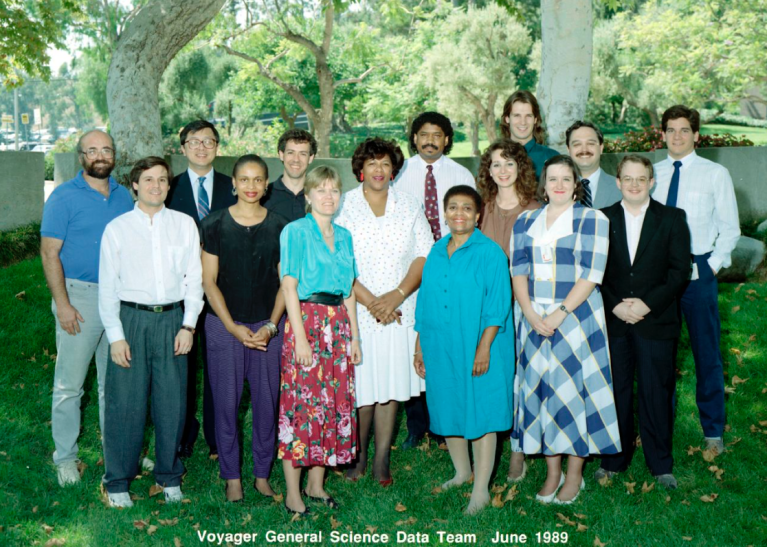
Trina L. Ray
Cassini Science Planning and Sequencing Deputy; Cassini Titan Orbiter Science Team Co-Chair; Investigation Scientist for REASON
Role on Voyager
Member of the General Science Data Team
Current role
Cassini Science Planning and Sequencing Deputy; Cassini Titan Orbiter Science Team Co-Chair; Investigation Scientist for REASON (the ice penetrating RADAR experiment on the Europa Clipper mission)
Hometown
Corvallis, Oregon
What is your most meaningful Voyager moment and why?
Back in 1989, I was hired by NASA’s Jet Propulsion Laboratory to work on the General Science Data Team for the Voyager project’s Neptune flyby. Incredible! My first job at JPL was on what could reasonably be argued as the best mission ever flown by JPL at the peak of its experience and capabilities. The project was in the late stages of planning and then executing the 1989 Neptune encounter — Voyager’s last great planetary encounter. The team had been working together for decades and I remember being amazed at how smoothly everything and everyone worked. The lines of communication between teams and people were crystal clear. Everyone knew everyone else; they knew what they did, they knew what they could do, they knew whom to talk to, and who was a reliable backup. At the time, I didn’t know enough to appreciate how fantastic Ed Stone was as project scientist, but having worked several missions over my 30 years at JPL, I can tell you I think he was one of the best ever!
As encounter day approached, there were press camped out in trailers down Mariner Road for as far as the eye could see. Every day, the smudge of Neptune kept getting bigger and bigger and more resolved and more beautiful on the screens showing the latest images. And — there were screens everywhere! All around the lab, in the cafeterias, in the conference rooms, in the hallways — you couldn’t help but be caught up in the ever-growing resolution of the images.
In the haze of “first job naivete” I thought, “Well, this is what working at JPL is like. This is how it will always be.” I didn’t appreciate the experience for its absolute uniqueness until many years later. How I wish I’d listened to my mother and written a journal during that first year of working at JPL.
Going to another project was a shock. Working on a newer mission — one still in development — is very different from being part of a flight team that’s been operating a spacecraft for many years. I vividly remember thinking, “This is complete chaos. How is it possible that we don’t know X, or that no one knows who to ask about that?”
Looking back, working on Voyager was a key formative experience in terms of setting my expectations about what a mission can do; how a mission team behaves; how your work colleagues become a family; what it takes to be successful at JPL; what it takes from the team for our mission to be successful; and ultimately what a JPL team can do to change the world. What a gift.
























